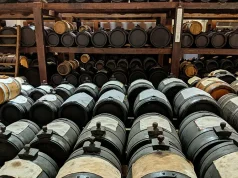
With a history nearly as old as civilization itself, olives are more than just a fruit – they are a way of life in Anatolia. Thanks to such deep roots and the Mediterranean climate, Türkiye is a paradise of olive groves.
From the Aegean to the Mediterranean and into the heart of Anatolia, the Turkish landscape is full of ancient olive trees. But the Aegean truly steals the show, hosting 75 per cent of the country’s bounty. In autumn, this vibrant region comes alive with the olive harvest, showcasing its rich soils and deep-rooted traditions, which are celebrated in every dish and daily ritual. You can experience this timeless tradition first-hand as the olive groves of the Aegean once again prepare to bring their miracle to our tables this fall.
The Routes of the Olive Tree: Where to Go
Türkiye, recognized by the Council of Europe as part of the olive routes, produces the fruit across all its regions. However, the highest yields are found in the Aegean provinces of Balıkesir, İzmir, Manisa, Aydın, and Muğla, with the entire Mount Ida region serving as prime olive growing territory.
A visit to the Adatepe Olive Oil Museum in Çanakkale marks the ideal beginning of the olive route in Türkiye. As the country’s first olive oil museum, it offers a glimpse into the history and process of olive oil production. Further inland, Balıkesir’s Ayvalık district is another key area where olive cultivation dominates the agricultural landscape. Harvest festivals here provide excellent opportunities to engage with locals and sample regional delicacies.
Travelling further down, you can visit one of the world’s oldest olive trees, which has borne fruit in Manisa, Kırkağaç for centuries. The 1,650-year-old tree was registered as a ‘monumental tree’ in 2013 and placed under protection.
In districts like Selçuk, Seferihisar, Güzelbahçe, Urla, Çeşme, and Karaburun, you can encounter ancient trees at every corner. In Urla, a charming district included in the Michelin guide for its farm-to-table restaurants, a historical surprise waits for you.
Venturing southwards to Aydın, the heart of olive groves with around 25 million trees, you will find the Oleatrium Olive and Olive Oil History Museum in Kuşadası. After exploring the history of olives in this region, you can continue to another holiday paradise, Muğla. The district of Milas is pivotal in the region’s olive production and is believed to have been home to olive trees for 8,000 years.
Olive Harvest: A Timeless Tradition
The olives, which begin blooming in June and continue growing through the last days of summer, become ready for harvest as autumn arrives. This time-honoured tradition brings together families, communities, and visitors to partake in the centuries-old harvesting practices, celebrating a fruit that is central to the region’s culture and cuisine. The harvest begins with picking olives and, in the Aegean, locals generally adhere to the centuries-old tradition of picking by hand, as it not only preserves the quality of the fruit but also fosters a deep connection to the land and the labour. The handpicked olives are then separated as ‘table olives’, ‘olives to be pressed as olive oil’, and ‘ground olives’, referring to those that have fallen off the branches.
From Branches to Tables: Miracle of Olive Oil
The journey of turning olives into oil is a unique adventure. Once harvested, olives are quickly taken to local mills or factories, where they are pressed and bottled to produce the staple of healthy Aegean cuisine. After pressing, olive oil plays a central role in enhancing the flavours of Aegean dishes.
Essential for a long and healthy life, olive oil is incorporated into every meal throughout the region. Often flavoured with seasoning, it is even served at breakfast for dipping bread. Regional herbs such as blessed thistle (şevket-i bostan) and samphire (deniz börülcesi), as well as vegetables like artichokes and zucchini flowers, are cooked with olive oil, creating simple yet healthy and flavorful dishes that highlight fresh ingredients. Additionally, salads dressed with olive oil, vinegar, or lemon are a common accompaniment to every meal.





